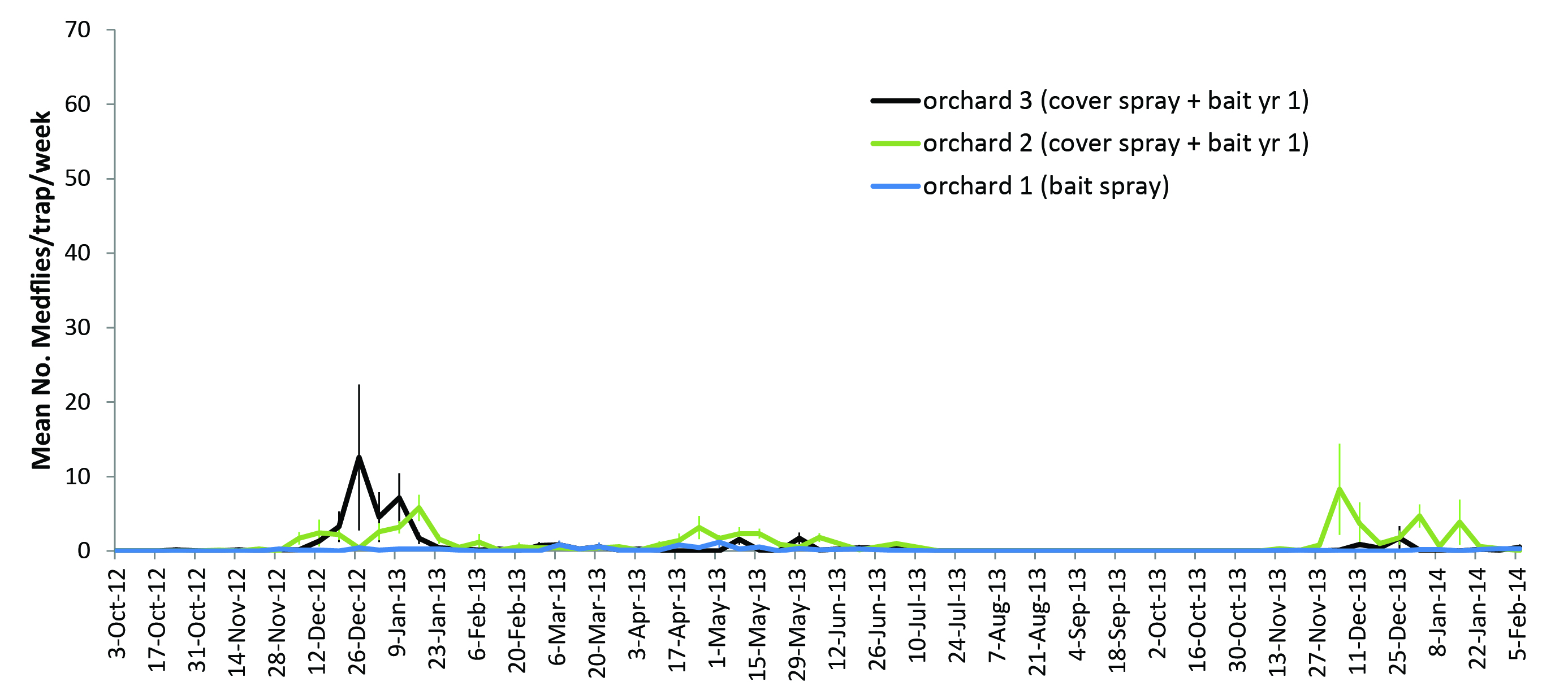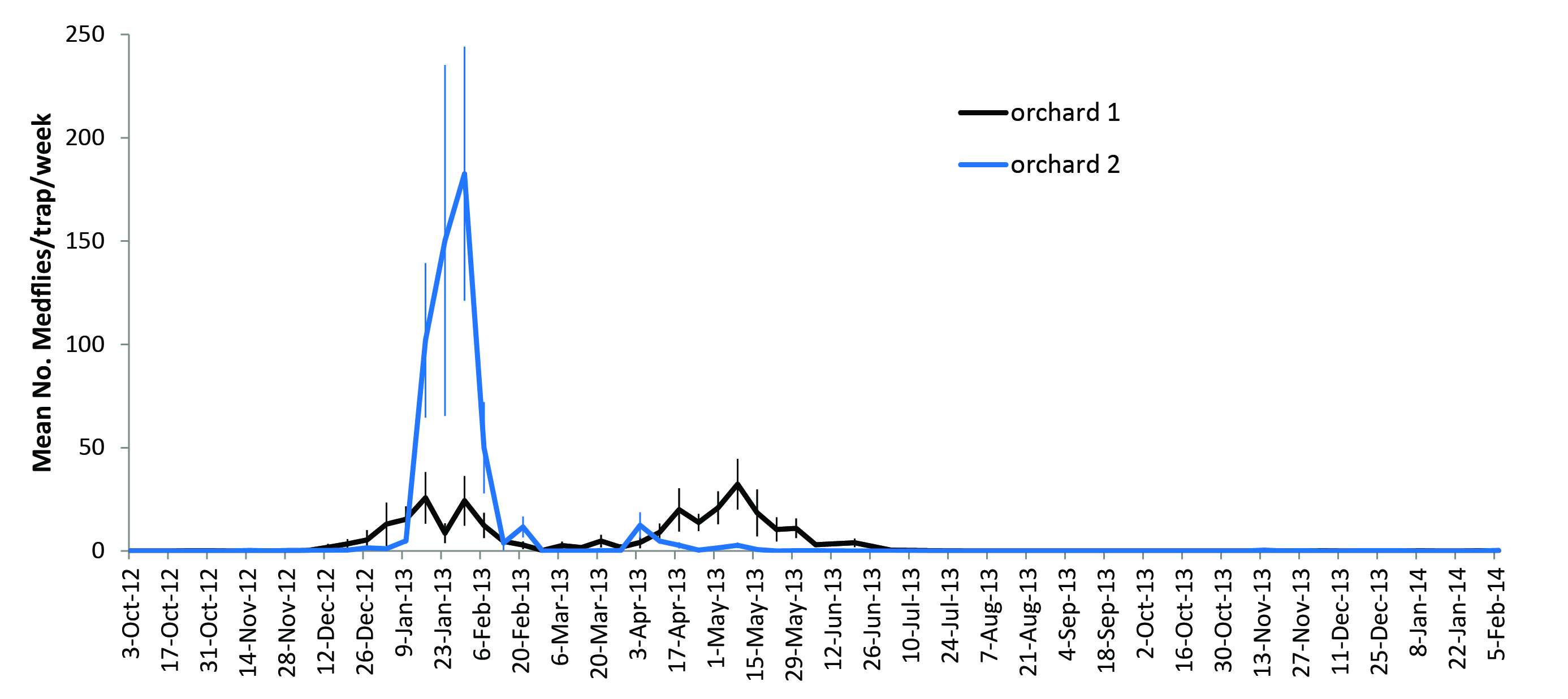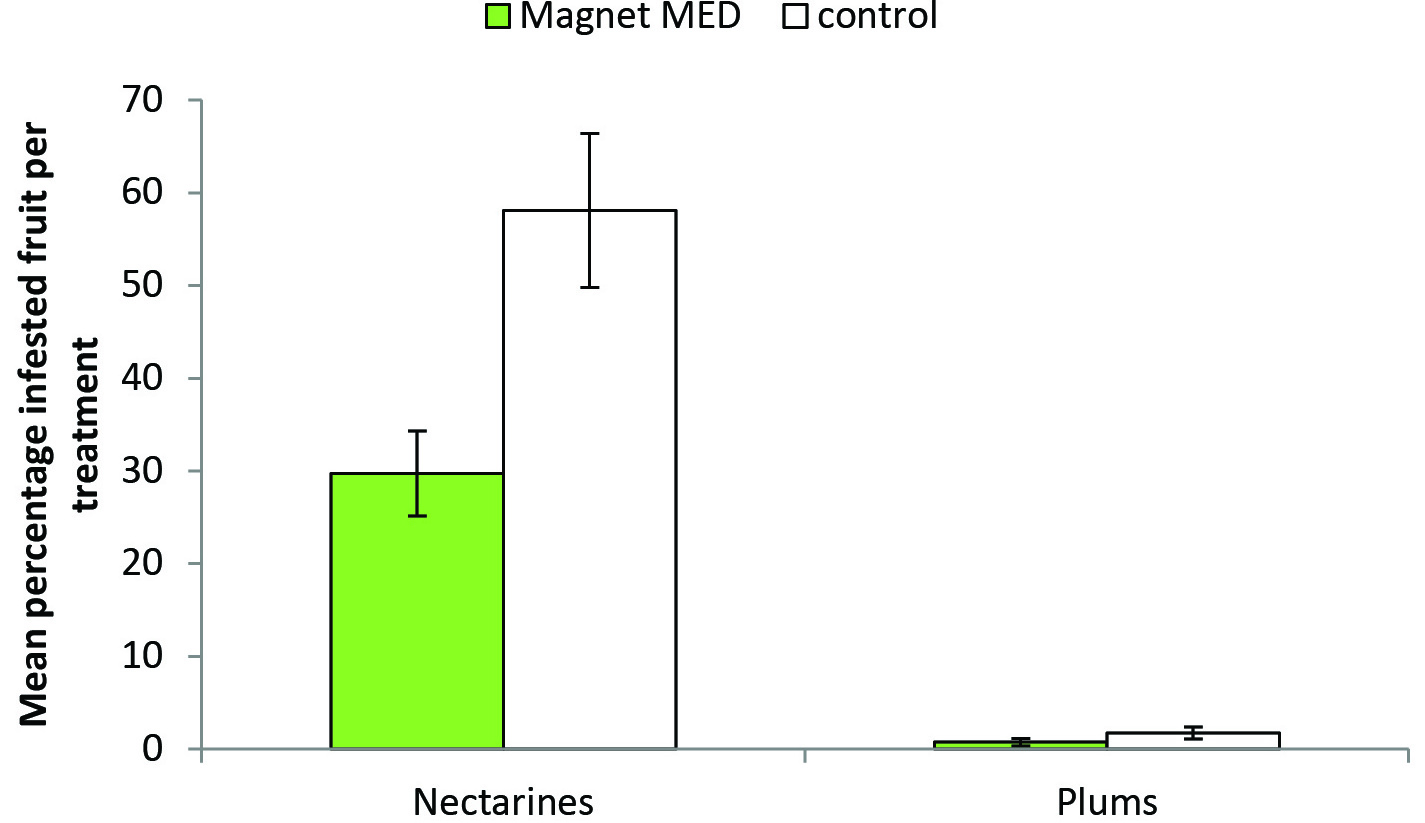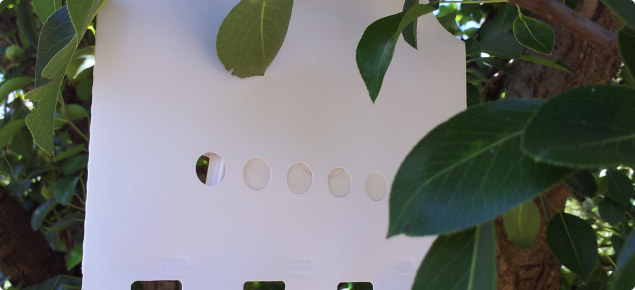What is area-wide management (AWM)?
Area-wide management is defined as "integrated pest management applied against an entire pest population within a delimited geographic area".
it can be carried out on several adjacent orchards, or within an entire cropping area. Controls that can be used for Medfly include bait spraying, mass trapping, orchard hygiene and cover sprays (when required).
Trial site
Jarrahdale is a small town 50km south-east of Perth, Western Australia in the Darling Range. The nearest commercial orchards are 0.7km east of the townsite. Commercial crops grown include stone fruit (nectarines, peaches, plums) and pome fruit (apples, pears).
Distribution of Medfly in time and space
An AWM approach involves considering distribution of the pest over time to determine the periods when it is most susceptible to preventive, rather than remedial, interventions.
Male and female trapping systems are used to monitor the distribution of Medfly, and to evaluate the effectiveness of management techniques. There are currently 100 monitoring traps in commercial orchards, 26 in home orchards, 20 in the townsite, and 14 traps located in bushland.
About half catch males and the other traps catch females. The pattern of adult Medfly (male and female) captures in Jarrahdale is shown below by land use type. The data indicates that:
- Adult Medfly were caught during winter, and rearing from fruit collections showed that larvae overwintered in apples. This emphasises the importance of orchard hygiene to prevent Medfly from overwintering.
- Medfly was first detected on commercial and small landholder properties on 7 November 2013, which was two to three weeks later than the previous year. These results suggest that baiting should have been carried out from early October.
- Medfly were most abundant and active from December to March.
- Very few Medfly have been detected in surrounding bush areas, indicating that dispersal onto commercial orchards from the town is limited and that Medfly does not like to move through non-host areas.
Which trapping system is best - male or female?
Trap catches in male-targeted (Lynfield traps with a trimedlure plug) and female-targeted (Tephri traps with three-part Biolure) were compared between 18 April 2013 and 6 February 2014 on eight commercial orchards. At the start of Medfly activity in Jarrahdale in the 2013/14 season, Medfly were first detected in male traps on five properties before they were detected in female traps. On three orchards, female traps detected Medfly first.
If growers can only afford one trapping system, it is recommended that the male trapping system be used. However, using both systems will increase the likelihood of detecting Medfly.
Control techniques
Bait spraying
An area-wide management group consisting of three commercial orchardists on adjacent orchards in Jarrahdale, 0.65km from the town was formed in 2013. The orchardists grow apples, pears, nectarines, peaches and plums, collectively covering an area of 40ha.
Grower 1 has been regularly baiting twice per week over the whole orchard since 2013, while neighbouring growers cover-sprayed during the same time period. In mid-January 2013, the other growers started baiting regularly and Medfly abundance has declined (<4.5 males/trap/week).

Cover spraying
Cover spraying was used as the main control method in 2012/13 on two adjacent orchards located 200m apart and 2.3km from the town of Jarrahdale. The data indicates that cover sprays did not suppress Medfly numbers for long – this is shown by a sudden drop in abundance, followed by resurgence a few weeks later. In the 2013/14 season, the growers started to bait regularly and numbers have remained below the action threshold.

Mass trapping
From 2000 to 2005, lure and kill and mass trapping was developed as population suppression tools for fruit flies overseas.
Both techniques are based on applying a bait station containing a dry (e.g. Biolure) or wet attractant (protein). The fly is killed when it receives a lethal dose of adhesive powder that has been applied to the bait station (e.g. alpha-cypermethrin, Magnet® MED), or drowns in the attractant (e.g. CeraTrap).
Mass trapping is differentiated from lure and kill by whether insects are retained inside the bait station. If they are retained, the technique is regarded to be mass trapping. Lure and kill and mass trapping have not been used widely in Australia, and no information is available on its efficacy.
CeraTrap® (Bioiberica, Spain) is the only device currently registered in Australia for mass trapping, for control of Medfly and Queensland fruit fly (Bactrocera tryoni Frogatt).
The efficacy of Magnet MED, a lure and kill device, was compared with an untreated control on two orchards in Jarrahdale in 2013/14. Orchard 1 consisted of nectarine, plum and apple, and Orchard 2 of a range of crops with apple the main host. Devices were installed on 12 September 2013, and both trial sites had Magnet MED devices present the previous year. Trap catches (male: Lynfield trap with trimedlure plug; female: Tephri trap with Biolure) and fruit infestation were used to compare efficacy.
Trap catches were less than 1 fly/trap/week on Orchard 1 until 26 December 2013, when numbers increased above the action threshold, remaining above the threshold for the last seven weeks (data not shown). On Orchard 2, trap catches have remained below 1 fly/trap/week. The increase in trap catches on Orchard 1 was attributed to the age of the lures, which are only thought to last for three months.
Nectarines and plums were collected from Orchard 1 on 13 and 28 January 2014 respectively, with 20 fruits per 20 trees per treatment. Fruits were held in a constant temperature room and checked 12 days later for Medfly. Significantly more infested nectarines were collected from the untreated control block. There was a very low Medfly infestation in plums in both untreated control and Magnet MED blocks.



